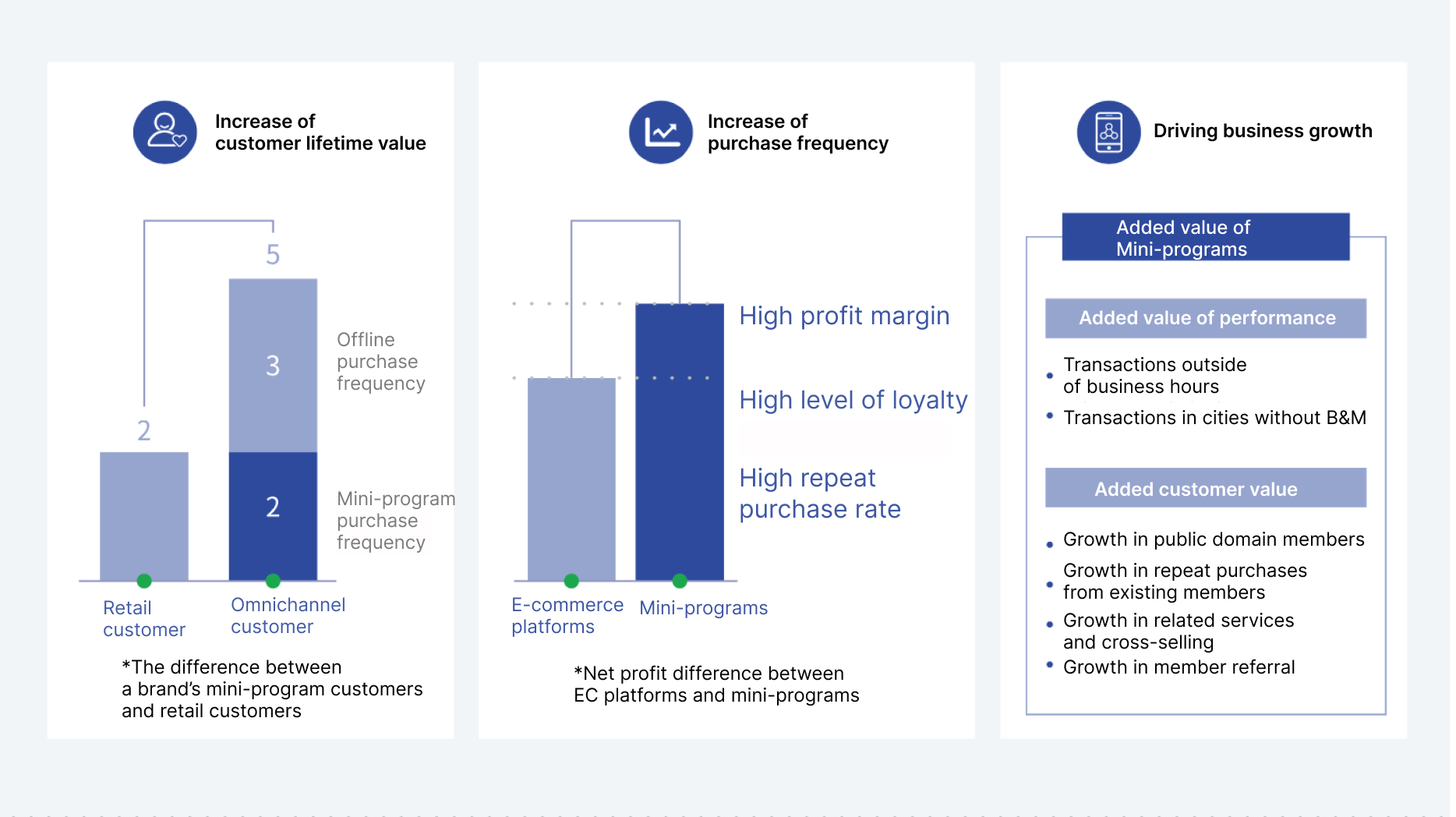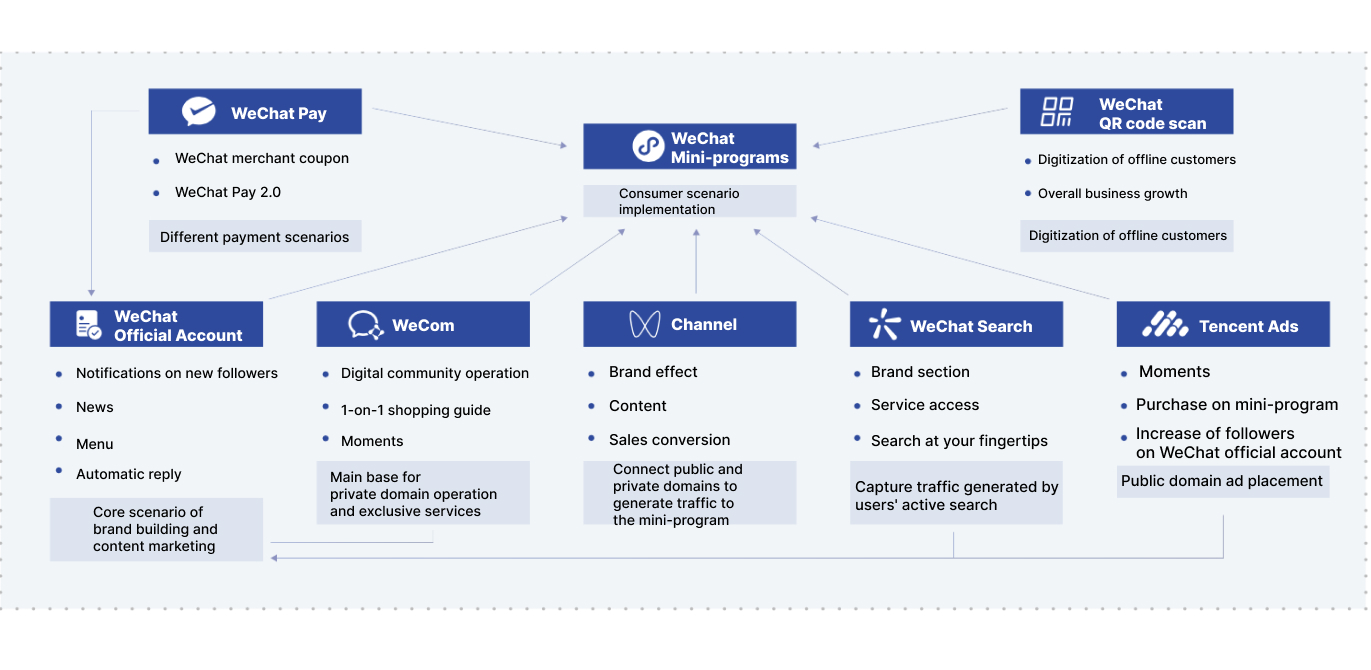Drive revenue in your private domain with digital sales
Leverage technology, product, marketing and operations to unlock hidden growth potential and sell more with your private domains.
Running a DTC business hasn’t been easy in 2022. Not only did COVID continue to make impact, sales channels in general are getting more saturated and expensive. Additionally, we have numerous emerging local competitors that are innately digital adding into the mix.
However, despite these challenges, it is clear that the trend towards digital sales will continue even after the pandemic is over. Many consumers have grown accustomed to the convenience and safety of online shopping, and are likely to continue using these channels even after physical stores reopen. To stay competitive and meet changing consumer preferences, businesses must continue investing in their digital sales strategies.
So, how can we drive digital sales in an increasingly competitive market?
The answer lies in developing an omni-channel digital sales strategy that is driven by measurable, ROI-focused objectives that are meaningful for all relevant departments within the company. But first, we must understand what digital sales really means.
Why digital growth peter out
Selling digitally is certainly the direction, especially for the China market, where 96% of the total population can be reached via various WeChat channels.
Digital sales is easy to get started, but hard to execute right. Majority of established brands invest heavily to set up multiple channels only to find little growth. Leadership begins to pressure on results and ROI, while the teams have a hard time to breakthrough the revenue stagnation.
In order to answer these problems, brands must orchestrate an omni-channel digital sales strategy driven by measurable, ROI-focused objectives meaningful for all relevant departments within the company.
Regain control of your traffic and users, own your growth
To begin, we define our scope of digital sales in the context of China market. We will focus on company-owned channels, or private domain, which as defined by Tencent as channels that:
- Can repeatedly engage customers at a relatively low cost,
- Can be operated with more customized services,
- Allow brands to own customer data.
Next we need to establish 4 key understandings about digital sales that will help brands get it right as opposed to what many others are doing:
-
Digital sales: It’s not just about the product anymore. Most brands think about digital product design when considering digital selling. In fact, digital sales takes a much more holistic view that covers brand marketing, product merchandising, and even operations. Before any implementations, it is crucial clarify the business opportunity specifically for your brands: Is it to increase cross-sell through styling tips? Drive more customers to offline stores? Or optimize member LTV? More importantly, you must get everyone onboard about the value-added and get ready to seek support from different teams in the long run.

Added value of WeChat Mini-programs
-
How Digital Sales transcends beyond a single platform. Opportunity of sales is only optimized when customers are well-funneled and nurtured through and through. When designing digital sales strategy, try to map out the journey from all the important starting points and potential end points across multiple channels. Not only will it give you a perspective of all the sales funnels within and across channels, it also serves as a foundation for better data tracking. Check out our CDP article on the digestion of multi-source data and customer identity resolution.

WeChat touchpoints
- The secret to using metrics and KPIs across your entire organization. If done well, digital sales presents much more in-depth data insights in comparison to traditional sales. Setting the metrics and KPI at the company level drives overall business effort and acts as a guidance for any adjustments needed to support sustainable growth and scale-up in the future.
- Growth requires continuous test and learn. There’s no way to get it perfectly right in one go. Depending on where your company is at, it takes extended time and effort from all teams to eventually find tractions and unlock growth opportunities. Building up the digital sales takes a scientific approach where you continuously test and learn from data indicators.
By setting up a coherent digital sales strategy that considers omni-channels and cross-functions (i.e. sales & marketing), brands can better understand their customers behaviors and extract meaningful insights that justify each dollar spent. There will also be far more clarity on future opportunities and direction for the business as a whole.
Boost your digital sales in just 5 steps
Let’s take a case example to walk through each step of digital sales.
This is a brand that had all the channels (WeChat Official Account, Mini-program, WeCom, Channel, and other social media platforms) in place and yet not seeing enough revenue generated from their own digital channels.
With a variety of things that could be invested in (CDP, WeCom selling, personalization, O2O inventory), they needed to figure out the most effective and sustainable ways to sell better.
Here’s what’s been done in the project, either by client, us or through collective effort:
- Assess current current digital readiness by asking the following questions:
- What are the sales channels in place and are they integrated to form a seamless experience?
- Is digital part of the larger business strategy with attention from leadership and support from cross functions?
- Is technology properly implemented for 360 customer profiles and data insights?
- Is there a common KPI shared between company level that drives overall strategy and planning?
- Is there a standardized process that could efficiently support daily operations and change requests?
-
Based on the assessment, align on the most critical gaps and define metrics shared between functions such as sales and marketing: Identify the business focus and goals, and define key performance indicators (KPIs) with all relevant stakeholders. The KPIs should be specific, measurable, achievable, relevant, and time-bound (SMART).
-
Map out the cross-channel customer journey with insights from existing data points. Identify blocker and unmet needs in the experience.
-
Explore unique selling points and digital enablers that could address the blockers: Based on the insights gained from the customer journey, find the unique selling point and digital enabler that addresses the needs of the target audience. This could be a specific product feature, a marketing message, or a unique selling proposition.
- Prioritize initiatives based on effort and value: Based on the unique selling point and digital enabler, prioritize the initiatives based on their effort and value. Focus on high-value, low-effort initiatives to gain quick wins and momentum.
With these outputs, client was then able to create testing plans to validate the assumption with data support and continue the iteration with much more clarity.
Digital sales not doubt presents untapped potentials for business breakthrough in China as well as in global. Interestingly the digital sales approach mirrors the scientific methodology that follows the step of Assumption - Validation - Repetition. The same logic could be applied for other digital areas such as digital product and digital acceleration.
If you are interested in reading more, check out Digital Acceleration, not Digital Transformation
If you’d like to stay up to date, subscribe to our newsletter.